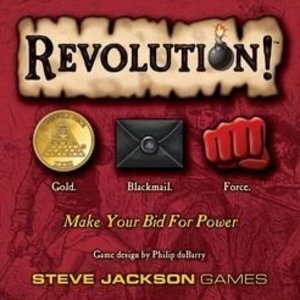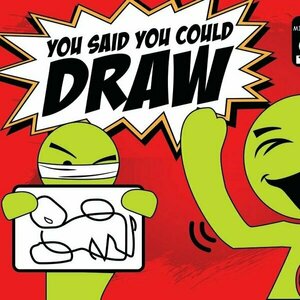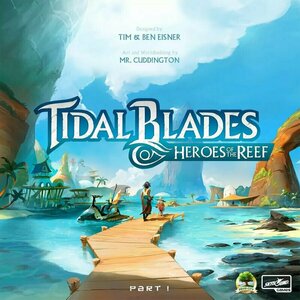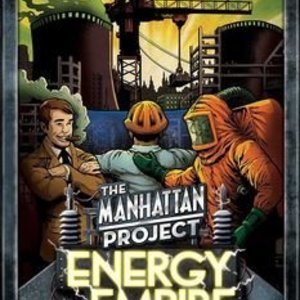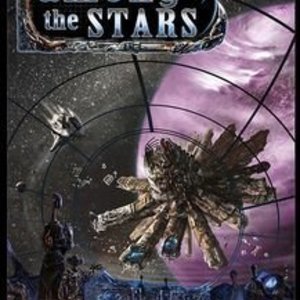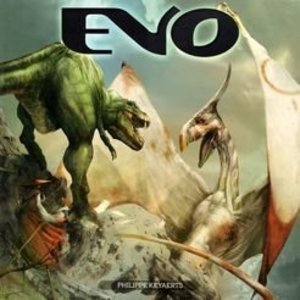
Evo (second edition)
Tabletop Game
In Evo, you play a nomadic people in symbiosis with a primitive reptilian species. You travel the...

World Flags Quiz Game – Guess the Country Flag – Free Educational Trivia
Games and Entertainment
App
Guess the country by its flag with this fun and educational geography game app! How well do you...

DragonBox Algebra 5+
Education and Games
App
DragonBox Algebra 5+ - The game that secretly teaches algebra DragonBox Algebra 5+ Is perfect for...
Purple Phoenix Games (2266 KP) rated Revolution! in Tabletop Games
Oct 31, 2019
Revolution! is an area control bidding game of influencing kingdom inhabitants to jockey for a superior position of power to win the game. The key is influencing the right people at the right time to gain resources, influence in the kingdom, and support (VPs).
DISCLAIMER – We are using the expansion “The Palace” along with our review as it add components to play with up to 6 people, and our game nights tend toward 6 players more than 4. The base game alone plays up to 4 players and uses 4 fewer characters to influence. Should we add in the “Anarchy” expansion we will either add that information here or link to the review from here. -T
To setup, place the main kingdom board on the table that outlines the different districts in which the players will be vying for majority influence. Each player chooses a color and receives all color-matched components: player reference screen, cubes, disc, and one bid board (which are all identical). Each player will also receive one Force token (red fist), Blackmail token (black envelope), and three Gold tokens (gold coins). You are now ready to begin.
Turns are taken simultaneously. Players will place tokens on their bid boards to denote which type of influence they plan to exert on an inhabitant and how many of each. For instance, you may place all your coins on the General and hope you win. Or maybe you want to place a coin and a blackmail on the Printer. Once all players have placed their influence on their boards, the privacy screens are lifted and each kingdom character is compared individually, one by one. Did your three Coins on the General fly, or did someone add a Blackmail token and prevail? Wait, one Blackmail wins? Yes, in Revolution! the gold Coins are the lowest value influence. So one Blackmail alone is enough to win against ANY NUMBER of Coins. Now, one Blackmail alone is defeated by one Blackmail and one Coin, but simply one Force would beat both of those attempts, as Force is the most powerful token type, but not all inhabitants are affected by Force. Take your General for example. Their color on the bid board is red, meaning that a red token will have no effect here. Once the winners of each kingdom person have been determined, the winners receive the benefits offered by each character. I will not go into detail the benefits each character gives you, but for an example (shown below on the play pic), the General awards the winner with one Support (VP), one Force (fist token), and you may place an influence cube in the Fortress. Before the next turn, each player will check their token collection and anyone who has less than five tokens will receive a number of Coins to bring their collection to five tokens.
As the bidding phase gains you resources for future rounds, or instant Support, etc, the second half of a round is influencing the different districts within the kingdom. You do this placing your won cubes on any space within a specific district to attempt majority control of it. At the end of the game, the players with majority control of each district will receive Support for the districts that correspond with what is printed on the board. These are VERY important as you can amass tons of Support from district majorities. The game continues in this fashion for a number of rounds until all influence spaces on the main kingdom board are full. Players then check for majority in each district and apply Support on the VP track. The player with the most Support at the end of the game is the winner! (It will be Kristin.)
Components. This is a heavy game, not in complexity, but in component weight. The boards are all of great quality, the cardboard tokens are nice, the wooden cubes are typical quality. The art on the game is good, if dated, but good. I have no complaints about the components.
As you can see from our scores at the top, we REALLY like this game. As one of the highest ranking games on BGG from Steve Jackson Games, this one delivers a great time of double thinking, bluffing your neighbors, and certainly rewards players for their great strategy. We used to play this game ALL THE TIME until it became futile playing against my wife. She is that good. At one point I thought I had her strategy figured out, but I have since lost it. However, I am always eager to play this and try again. One of these days I will claim victory. Revolution! could definitely stand an update, or re-theme, or something along with a reprint to bring it into more homes, but I am glad I have a copy (with all the expansions *shoulder brush*) and it will not be leaving my collection any time soon. That’s a mark of a great game, and that’s partly why Purple Phoenix Games gives this one a close-to-a-Golden-Feather-Award-recipient 23 / 24. If you see one in the wild, pick it up!
Purple Phoenix Games (2266 KP) rated You Said You Could Draw in Tabletop Games
Apr 23, 2021
In You Said You Could Draw (I will just acronymize to YSYCD) players are attempting to win the game by scoring the most points. The provided score board has space for each player to earn 20 points, though agreements could be made by players to stop at any number of points.
DISCLAIMER: We were provided a prototype copy of this game for the purposes of this review. These are preview copy components, and I do not know for sure if the final components will be any different from these shown. Also, it is not my intention to detail every rule in the game, but to give an idea of how the game is played. You are invited to download the rulebook, back the game through the Kickstarter campaign launching May 8, 2021, or through any retailers stocking it after fulfillment. -T
To setup a game of YSYCD place the score board anywhere on the table and players choose which color board they wish to represent themselves. Players are also given a dry erase marker. The large deck of cards is placed somewhere near the score board, along with the blindfold. Players will roll the die to determine the first player, and the game may now begin!
YSYCD is played in turns until a player reaches the aforementioned ending score. On a turn a player will draw a card, roll the die, then draw. On each card is a list of six prompts to be drawn by the player and the result of the die roll determines which prompt the player must draw. Once the player is ready they will don the blindfold and begin drawing on the large board. When the masterpieces is complete the artist will write the name of the player they believe will guess correctly. Both the drawing process and the name writing are secret – no lookyloos! When the artist reveals their labor each player will secretly write their guess on their player boards, to be revealed simultaneously once all players have finished. The artist reveals their choice and the other players reveal their hilarious guesses. Points may now be awarded.
The artist will receive one point if at least one player has guessed correctly, with a bonus one point earned if the player they wrote on their board guessed correctly. Each player who guessed the prompt correctly also scores one point. If ALL players guess correctly except for one lonely player, the lonely player will earn a painful NEGATIVE two ( -2 ) points!
Players will notice that one prompt on each side of the card includes a star icon. Should this prompt be rolled for the turn the points awarded for the artists and correct guessers are three, versus the typical one. Play continues in this fashion until a player has reached the agreed score threshold and claims victory!
Components. This game boasts two large and eight smaller dry erase boards with eight dry erase markers. The boards are fine, but the markers (at least in this prototype version) are very low quality, especially the erasers. We resorted to using napkins for our erasing needs, as they did not smear as much. The 1d6 is fine, and the blindfold is very comfortable (thank you, JPN Games!). The cards are fine quality and there are 100 double-sided cards, offering 1200 prompt options to draw! I normally also cover art direction and theming here, but there is very little art, with most of it on the box cover. The box cover in this version features two players having a great time playing the game in a color VERY close to our logo’s Volt color. So I’m a fan of that for sure.
The rulebook is a simple folded cardstock that could easily become a duplexed sheet of paper or stock. The rules are incredibly simple to learn and teach, which makes this a great entry for families.
I recently broke this one out to play with my brother-in-law, his wife, and their twin 10-year-old children. When I say that it has been a long time since I laughed so hard while playing games, I certainly mean it. Most drawing games favor the talented artists of the group, but YSYCD offers the great equalizer – that blindfold. Sure, someone could be able to draw an excellent Sonic the Hedgehog (not a sponsor), but once you take away the spacial awareness drawing becomes a lot more difficult. And having a 10-year-old look into your eyes and tell you they drew a Chef instead of your guess of Quasimodo makes for a very interesting adult-child dynamic.
All in all I have had a great time with this game. The blindfold is what makes this special, and rolling the die to select the prompt causes each player to begin their turns on the same artistry level as their opponents. I dig that. A lot. I will be honest here – this is not a game that I would see at a store and be interested in buying or playing. But I gave it a shot with the family and I now have a party game that differs from my other party games in my collection and I am all the happier for it. You Said You Could Draw is not for the hard core gamer. It is for the gamer who needs a break from the brain burning and is able to relax a bit and have fun – even at their own expense. If this sounds interesting to you, I urge you to check out the Kickstarter campaign, launching May 8, 2021. Pick up a copy or two or twelve and give some away. The holidays are always just around the corner. Also, be warned that some children cannot accept that their Chef looks like Quasimodo. I learned this the hard way.
Purple Phoenix Games (2266 KP) rated Tidal Blades; Heroes of the Reef in Tabletop Games
Apr 20, 2021
DISCLAIMER: As this game is a giant and many reviewers are starting to tackle it using multiplayer rules, I decided I would talk about the differences between multiplayer and solo rules. This review is using the included Solo Mode rules.
Setup for the Solo Mode uses most of the setup rules for the multiplayer game with a few exceptions. In the Solo Mode the player will have one character to control and one Rival to beat. The Rival will need their player board and standee or mini (I have the Deluxe Edition, so it’s minis in my case). In addition, the player will also choose two other characters to be Allies, utilizing their ability cards and minis. The Allies and Rival will be placed on the Champion board ahead of the player to begin the game. The player wins by having more points than the Rival at the end of the game.
Quickly, here is Tidal Blades in a nutshell. Players are attempting to gather the greatest standing on the Champion board (like a VP track) and VP from Challenge cards gained. The players earn these cards by using Actions to move to islands, gather resources, fight monsters, perform boating maneuvers and tricks, and can increase the potential for each of these by upgrading their central board dials. Shells and Fruit are common resources, and each player starts with two Actions per turn. The game lasts four total Days (or phases with several turns in each), and players earn more Action discs on Day two and four. Every time the dice are rolled to complete Challenges a Danger Die is also rolled and can wound the player by forcing a discard of dice. Each Day players can refresh and upgrade used dice to better their skill and concentrate their abilities. After Day four the game ends and players count up points to declare a victor!
Here is how gameplay is slightly different from the multiplayer experience. The Rival always goes first. They will also have one more Action disc to use on their turn (unfair, right?). When they begin their turn, a Challenge card is drawn. Whichever Island is featured on the card is to where the Rival will travel. Once arrived, the amount of VP awarded on the card is how many spaces from the top of the Island the Rival will be placed. Depending upon which Island the Rival ends the Challenge card will then be placed under the Solo Mode mat and a special action taken. The special actions could be revealing and resolving a Plot card in Droska Ring (special to Solo Mode), removing Monster hits from the Fold in the Chronosseum, or moving the boat in Lamara Stadium. The Judge location also plays a role in special actions should the Rival land on the same Island as they are. Other special goodies await, but I will leave you to discover those.
On the player’s turn, if the player is tied with or ahead of their Allies on the Champion board, the player will be able to use the Allies on their turn. This is handled similar to having an extra Action disc on the player’s turn. Send the Ally to a location and reap the rewards. Otherwise, for the player, turns are the same.
Components. Let me tell you: if you have the extra money to splurge for the Deluxe Edition, DO IT. The minis are amazing, the plastic shells are awesome, and those squishy fruit are so perfect! Obviously the game is perfectly playable and enjoyable with the basic components, but the improved bits are really something special. The cardboard everything is great, the GameTrayz inserts are incredible, and the art and colors are simply magical. I cannot say enough excellent things about what comes in this massive box. Druid City Games and Skybound Tabletop got everything right with this one.
It should be no surprise that I am in love with this game. Yes, it’s a Solo Chronicles, and I played by myself. I get that. Eventually I will be able to play this with others and by then I will be so engrossed in the lore that I will have no problems hyping up my playmates. Tidal Blades is an absolutely gorgeous game with so much going on that I don’t think I will ever tire of it. The game lasts four days but I wish it were a month because I just want to keep playing! The decisions to be made are all wonderfully delicious and there always seems to be too few on your turn. Yes, I know that sounds like all worker placement games, but it is especially true here. Almost every spot on the board gives immediate benefits that can be used, so even when a location is occupied, there will always be another of equal importance to your character. It’s so good.
Like I said before, I love the art and colors used. This is a stunner of a game on the table. It does take up quite a bit of room, especially if you use the arena dice tray (which I didn’t because I play at night when the kids are asleep and a hard plastic dice tray wakes up children). I count myself lucky to have the Deluxe Edition as well because those upgraded bits really make the game feel deluxe and fancy.
The Solo Mode is very good, and at least for me, very difficult to win. The combination I used for this review was playing as Axl against my Rival Caiman. Obviously switching out characters and using different Allies will change up the feel a bit, and I really cannot wait to try out all the permutations. When a game begs you to play it as often as you can and you look at it lovingly on your shelf, you know you have a Top 10 game, and a treasure in your collection.
Purple Phoenix Games (2266 KP) rated Please Fix the Teleporter in Tabletop Games
Jan 25, 2021
Please Fix the Teleporter is a quick real-time action/dexterity card game for 1-4 players, but in this preview I will be tackling it as a solo experience. In it players are teleportation specialists charged with repairing a malfunctioning teleportation beam that is displaying strange mix-and-match features of the two persons attempting to board the craft. By matching the images on the display six times the Captain and his quarry can board safely and in one piece.
DISCLAIMER: We were provided a prototype copy of this game for the purposes of this review. These are preview copy components, and I do not know for sure if the final components will be any different from these shown. You are invited to back the game through the Kickstarter campaign,or through any retailers stocking it after fulfillment. -T
To setup for a solo game choose one color of body part tiles and place them in front of the player. Shuffle the deck of scrambled cards and deal six face-down. Have a timer handy (Alexa, Siri, or Google also work well) and the game may begin!
Gameplay is simple: flip over one card, match the card with the body tiles to recreate the image and then flip over the next card. Repeat these steps until all six cards have been matched and then stop the timer. Based on the table on the back of the rulesheet the player may determine how well they fared. For example, the highest score that may be achieved is five stars, which is earned by completing the game in under 30 seconds.
Once the game is over, the player will most certainly wish to play again, so multiple games may be played in order to earn that glorious five star rating.
Multiplayer rules are almost exactly the same except instead of dealing six cards at the beginning, the first player to match and claim five cards will be the winner.
Components. This game is a bunch of cards and four tiles per player. The cards are nice squares and the tiles are chunky cardboard. What sets this game apart for me is the art style. The art here, as you have seen, is so crazy and wonky and I just love it! The colors used are some of my favorites and it just looks amazing on the table. I have zero complaints for components and art.
Gameplay is similarly loved. This one is so quick and easy that anyone can play and be great at it. It takes mere seconds to teach and each player will want to play more and more, even the solo player. I cannot really comment on strategy, as this game really doesn’t lend itself to any sort of strategic play. It is a free-for-all to match the cards and move on to the next. I like being frantic.
So if you are at all like me and love these little “refreshers,” as I like to call them, check this one out. It will fit perfectly between two heavy hitters to refresh the players for the next game. Or will perfectly balance your night of solo play. Are you into theme nights? I am. What a great addition to an outer space themed game night! Quick and easy with excellent art. This one is a winner, even if I never manage to actually fix the dang teleporter.
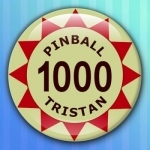
Pinball Tristan
Games
App
Now you can enjoy the worldwide best selling, award winning Pinball Tristan in retro 3D! You'll love...
Matthew Krueger (10051 KP) rated The Manhattan Project: Energy Empire in Tabletop Games
Feb 22, 2021
Players sit in the roles of countries trying to develop industry and energy production over a period of time roughly from the end of World War II to the present day. Throughout the game, players will construct buildings, power plants as dice, and manage the pollution in their environment with the aim of scoring the most points.
To begin play, the main board for Energy Empire is seeded with starting Building cards. These are divided into three different sectors: Government spaces, Industry spaces, and Commerce spaces. A set of pollution tokens, depending on the number of players, is also stacked on a track as the game timer.
Once the game begins, it flows continuously without rounds. Each player chooses, on their turn, to take a Work Turn or a Generate Turn.
Work Turn- During this type of turn, players must place a single worker on the main board on one of the spaces which represent activities and resources to collect. For example, this may be gaining science, steel, or purchasing oil. Afterwards, depending on which sector the player placed their worker, they can activate any previously purchased buildings, assuming they have enough workers and/or energy. Players can also activate their nation card and move up on the United Nations track, which is a pure competition for end game points. Energy is also used if a player wishes to place a worker on a space occupied by another worker. The player must place additional energy under the worker until their placement stack is larger than any other already placed.
Generate Turn: This type of turn represents the player resetting their work potential for a new set of placing workers. They do this by first potentially collecting an achievement which represents end game points for a variety of goals. They then recall any workers to their Player Mat and discard all Energy tokens. Players can also spend any oil resources to gain oil power plant dice. Finally the player rolls any or all power plant dice they have. This might include Solar/Wind (green dice), Hydro Power (blue dice, limited to one per player), Coal (black dice), and Nuclear (yellow dice). The resulting number of lightning bolts on the dice are delivered as energy tokens to the player. If a clean energy source rolled the highest cardinal number, the player does not collect pollution. If coal, oil, or nuclear dice resulted in the highest number, then the player places a single pollution token into their environment. Players continue this process one after another until a predesignated number of pollution tokens are removed from the game. Players get one final turn and then points are tallied. Players receive points for keeping their player mat free of pollution, building power plants, the United Nations track, and various points for each building constructed.
The most engaging part of the game and the main reason to seek it out, comes from the theme of global power intrigue. The building cards show off the exceptional art in the game.
Manhattan Project: Energy Empire Cards
The global impact cards for the first half of the game are green with a milder impact. Once they go red, prepare for some serious negative events. On top of this theme, the actions associated with everything in the game fit just right. The concept in game actions connect directly to the theme concept. In addition, the country actions to move up on the United Nations track also represent the tone and success formulas for those countries. The mechanism for rolling dice to gain energy and how much pollution is delivered feels just perfect given the competing goals of clean environments and high energy production.
The worker placement mechanism itself (largest stack among existing workers) is not new, but it is just the right mechanism to promote the overall feeling of energy competition. Choosing the space on which to place a worker is highly engaging and the choices tense to maximize efficiency. It is easy to connect with both strategy and tactics in this game.
Even with this engagement, it is also easy to see optimal routes for gaining points assuming opponents follow their strategies. It’s not “easy”, but it is possible to not even worry about opponents blocking a particular path to victory with low numbers of players.
Its a excellent work placement game. One i highly recordmend getting and play.
Purple Phoenix Games (2266 KP) rated Among the Stars in Tabletop Games
Dec 3, 2021
Disclaimer: Among the Stars can be played in two different modes – Aggressive and Non-Aggressive. This review covers the core game Non-Aggressive mode of play. -L
Among the Stars is a game of card drafting and tile placement in which players take on the roles of different alien races attempting to build the most efficient space station over the span of 4 years (rounds). After the 4th and final round, players calculate their final scores, and the player with the highest score is the winner! To setup for a game, assemble the Location deck as described in the rules. Each player takes a Main Reactor card and score marker in their chosen color. Score markers are placed at zero on the score board, and players put their Main Reactor card face-up in front of them, along with 2 Energy Cubes. Players choose, or are randomly given, a Race Tile with a special Racial Ability to be used throughout the game. Randomly draw the requisite number of Objective cards and put them face-up near the score board. The game is now ready to begin!
Over the course of 4 rounds, players will be drafting cards and playing them into their Space Station. At the start of each round, every player collects 10 Credits (game currency), and draws a hand of 6 Location cards. Every turn, players will select one card from their hand, place it face-down in front of them, and will pass the remaining cards in their hand to the next player (in either clockwise or counter-clockwise direction, depending on the round). Players will then simultaneously reveal their chosen card and perform one of three actions: Build a Location, Build Power Reactor, or Discard and gain 3 Credits. To Build a Location, you pay its listed cost in Credits and/or Energy and add it to your Space Station. Locations must be placed orthogonally adjacent to an existing Location. When you build a Location, you immediately gain the listed number of VP (tracked on the score board), and may use its ability. Some abilities are immediate and earn you extra VP now, while some are delayed and will be counted at the end of the game. To Build a Power Reactor, you will first discard your selected card for the turn. Pay the 1 Credit cost of a Power Reactor and place it into your Space Station, along with 2 Energy Cubes. Every round, you get 10 Credits, but Energy Cubes do not replenish unless you build more Power Reactors, so keep an eye on your resources! The last possible action is to Discard and gain 3 Credits, and is pretty self-explanatory.
Players continue taking turns (drafting cards, passing cards, and playing cards) until they are left with no cards in hand. The round is now over. Move the round marker to the next space, and begin a new round by drawing another hand of 6 cards. After the 4th round of play, the game ends and final VP are scored. Victory Points have been earned throughout the game, but now any delayed abilities are triggered and scored, Objective points are added, and players gain points for Power Reactors and remaining Credits. The player with the highest score is the winner!
See what I mean about being 7 Wonders in space? The overall gameplay is pretty much the same thing – draft a card, pass cards, play the card – even though thematically they’re on opposite ends of time. That familiarity and simplicity of the gameplay definitely added to my enjoyment of the game. And when I say ‘simplicity’ of gameplay, I do not mean that it is an easy game necessarily. It still requires a decent amount of strategy! Not only do you have to decide what card to draft for maximum benefit, but you also need to figure out exactly where to put it in your Space Station too. Some Locations may give you extra VP for being adjacent to certain other Locations, or they may even earn more VP for distance between two Locations. You’ve got to be thinking in advance, but also able to adapt on the fly. Do you draft a card that you don’t necessarily want because you can see your opponent needs it? Or do you keep your head down and try to fly under the radar? The strategy and mechanics work very well together in creating an engaging and entertaining game.
Components. This game basically just consists of cards, a score board, and some tokens. So even though it’s nothing too fancy or anything, they’re still pretty decent quality! The artwork is thematic and fun to look at, and the layout of the cards is easy to understand. The cards are square, so that makes for some interesting shuffling, but the square shape really lends itself well to the tile-laying aspect of the gameplay. So all in all, good production quality. Just be warned – as the game progresses, it turns into quite a table hog, since you are constantly adding cards to your Space Station. Not a knock on the game, just a heads up so you give yourself plenty of room!
Will Among the Stars replace 7 Wonders for me? Ultimately, no. Don’t get me wrong, it’s still a great game, but 7 Wonders just offers a little more strategy that bumps it to a higher level than Among the Stars. To introduce players to these mechanics and gameplay style, I would use Among the Stars because it is a little ‘lighter’ than 7 Wonders, if you ask me. If you are a fan of 7 Wonders and are interested in a more futuristic theme, I would definitely recommend checking out Among the Stars. It’s a neat game that has been hiding on my game shelf without the playtime it deserves. Purple Phoenix Games gives this one a stellar 15 / 18.
